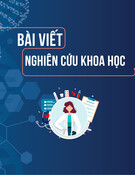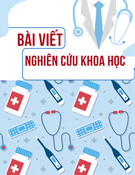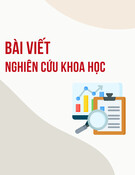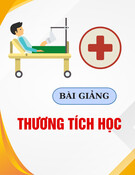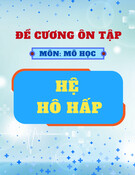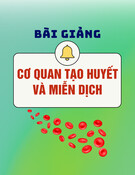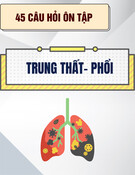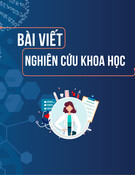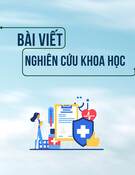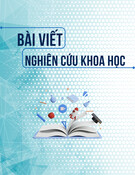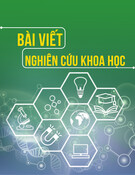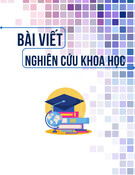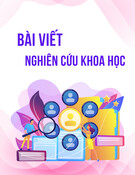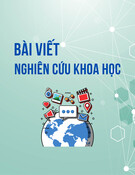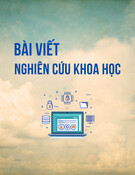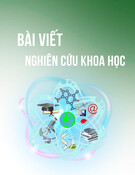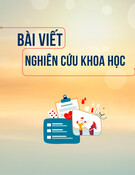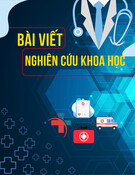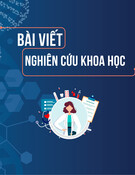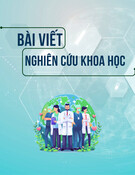
27
Journal of Medicine and Pharmacy, Volume 13, No.04, June-2023
Corresponding author: Nguyen Thi Anh Phuong; email: phuong.nta@huemed-univ.edu.vn
Recieved: 10/11/2022; Accepted: 25/4/2023; Published: 10/6/2023
DOI: 10.34071/jmp.2023.4.4
Evaluating the effectiveness and applicability of ubiquitous-based
learning about post-operative care of gastrointestinal cancer surgery
for patients’ family caregivers
Vo Thi Bich Nga1, Nguyen Thi May2, Vo Thi Diem Binh2,
Ho Thi Thuy Trang2, Nguyen Thi Anh Phuong2*
(1) Danang Oncology Hospital
(2) Faculty of Nursing, Hue University of Medicine and Pharmacy, Hue University
Abstract
Background: Utilizing Ubiquitous - Based Learning (UBL) in health education within the hospital setting
has practical support for the patient’s care. However, the application of technology in health education
programs in a hospital environment is still limited. Objectives: This study aimed to evaluate the effectiveness
and applicability of UBL in the post-operative care of gastrointestinal cancer surgery for patients’ family
caregivers at Department of Surgery 1, Da Nang Oncology Hospital from April 2020 to February 2022.
Materials and method: A quasi-experimental study was conducted on 70 family members of patients
being treated after gastrointestinal cancer surgery at Department of Surgery 1, Da Nang Oncology Hospital.
Results: The effectiveness of UBL: The findings revealed no significant difference between the two groups’
knowledge scores before the intervention. However, the post-test mean scores increased in both groups; in
which, the intervention group’s mean score of knowledge was significantly greater compared to the control
group with 3.23 ± 0.84 and 1.82 ± 0.92 respectively (p < 0.05). The applicability of UBL: All family members
agreed and completely agreed on the features of UBL in family health education about caring for patients
after gastrointestinal cancer surgery. Conclusion: The teaching method utilizing UBL is significantly more
effective than traditional teaching methods, and it is necessary to enhance its application in health education
in hospitals and the community.
Keywords: Ubiquitous-based Learning, Health education, gastrointestinal cancer surgery.
1. INTRODUCTION
Comprehensive renovation of education,
especially medical education, is a current trend in
the world as well as in Vietnam. Ubiquitous-based
learning (UBL) is a new learning model, overcoming
the disadvantages of previously existing learning
models such as E-learning and Mobile learning.
UBL can be used online with an internal network
connection system or used in a disconnected state.
This is a form of education that can be provided
anytime, anywhere through smart devices and is
not limited in time, place, or environment or on
the internet, 3G, or Wifi [1]-[3]. UBL is widely used
in many countries around the world in training
natural and social sciences such as Korea, Indonesia,
Philippines, Mongolia, Nepal, and Vietnam [8], [10].
The use of UBL in health education in hospitals and
communities is a new but promising experience that
can provide practical support for the treatment and
care of patients [4].
Vietnam has five gastrointestinal cancers ranked
in the top 10 cancers with the highest incidence
and mortality [11-12]. People with gastrointestinal
cancer when treated with surgery have many risks
and possible complications. Therefore, care for the
patient has a certain influence on the outcome of
treatment and prognosis. The Ministry of Health
has determined: “In the care of people with cancer,
family members are members of the care team.
Therefore, training in the care of the patient’s family
members is essential” [5].
Due to a number of objective and subjective
reasons, the application of technology in health
education programs in hospitals is limited. In order
to develop and apply the UBL method better in
the future, contributing to improving the quality
of training, care services, and better service for
patients at the Department of Surgery 1, Da Nang
Oncology Hospital from April 2020 to February 2022
we decided to conduct this study with the following
objectives:
1. Evaluating the effectiveness of UBL in
educating the post-operative care of gastrointestinal
cancer surgery for patients’ family caregivers at





